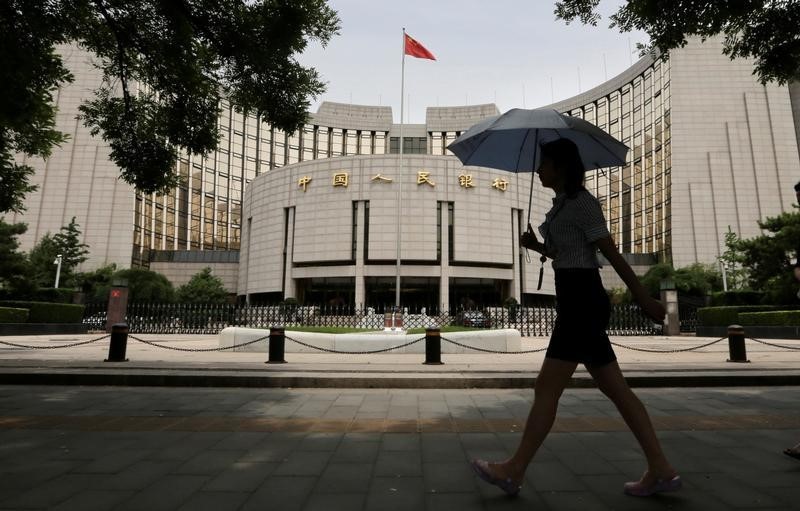(Bloomberg Opinion) -- As the financial world’s movers and shakers hunker down at Jackson Hole this weekend, one pressing question will be who’s next to cut interest rates. The People’s Bank of China has already decided: It isn't joining the global race to the bottom.
Over the weekend, the PBOC took a long-awaited step in interest-rate reform, which aims to give markets more sway in determining borrowing costs. The central bank will make the loan prime rate, which banks offer to their best clients, the new benchmark for pricing loans. That rate also will be linked to lenders’ cost of borrowing from the central bank, or the so-called medium-term lending facility. Previously it followed the one-year lending rate, which has been considered too blunt a tool to manage an economy so saddled with debt.
To many, this is a clear easing signal. At 4.35%, the PBOC’s policy rate is 105 basis points higher than that of the MLF. The new loan prime rate, to be announced on August 20, will likely be substantially lower than its current level of 4.31%.
This is a misconception. Rather, the measure is an acknowledgment from China’s central bank that a policy rate cut would no longer be effective. The PBOC’s priority is squarely to improve the way liquidity flows through China’s financial system.
Throughout this year, researchers at the PBOC have been saying that China’s baseline interest rates are already low enough, and reducing them further will do little to drain China’s “capital swamps,” or segments of the economy that can’t get any – or affordable – financing. Banks are becoming pawn shops, unwilling to lend to smaller enterprises that can’t put up big plots of land as collateral.
Indeed, a sharp divergence is forming between the corporate-loan and bond markets. While AAA-rated companies can now borrow at much lower rates by issuing debt – thanks to the PBOC’s various easing measures – rates on bank loans, which still account for two-thirds of China’s total social financing, have hardly budged. That makes the loan prime rate an obvious candidate to bring down the cost of borrowing for small businesses.
If you need any more evidence that this is a tweak, rather than a broad-brushed easing move, read the PBOC’s wording carefully. The central bank’s language indicates it isn’t ready to have long-term bank loans, such as consumer mortgages, follow market-moving rates just yet. In other words, don’t expect mortgage rates to fall.
Between late 2014 and 2015, the last time the PBOC cut its policy rate, disaster ensued. With so much easy money flooding the system, China’s stock market saw a meteoric rise and fall and the real-estate market went haywire. The average home price of the four first-tier cities of Beijing, Shanghai, Shenzhen and Guangzhou doubled from less than 25,000 yuan ($3,550) per square meter in 2014 to more than 50,000 yuan by 2018. Now that President Xi Jinping has tied his political legacy to the mantra that “apartments are to be lived in, not speculated on,” the PBOC will not – and dare not – restart full-blown easing now.
For bank loan rates to fall, the PBOC has two options: cut the policy rate and risk forming another asset bubble, or find a way to revamp interest rates. It has understandably opted for the latter.
Will China’s new bank loan rate become an effective policy tool? Only time will tell. But at least China is learning its lesson – rate cuts don’t necessarily work and may just create new problems. While the world’s major banks are racing to cut their rates to zero, China is now sitting on the sidelines.
